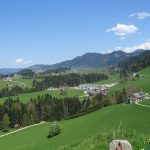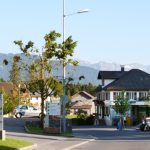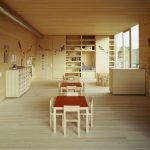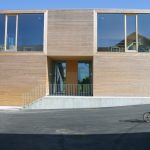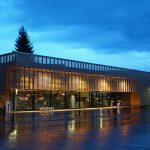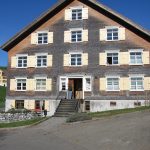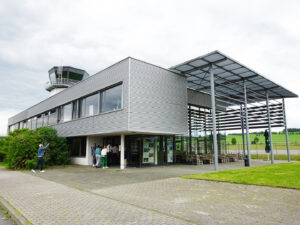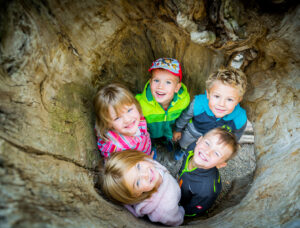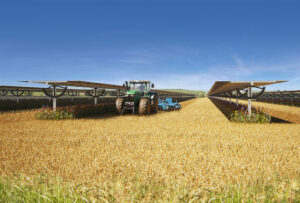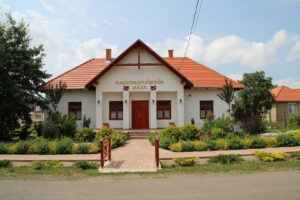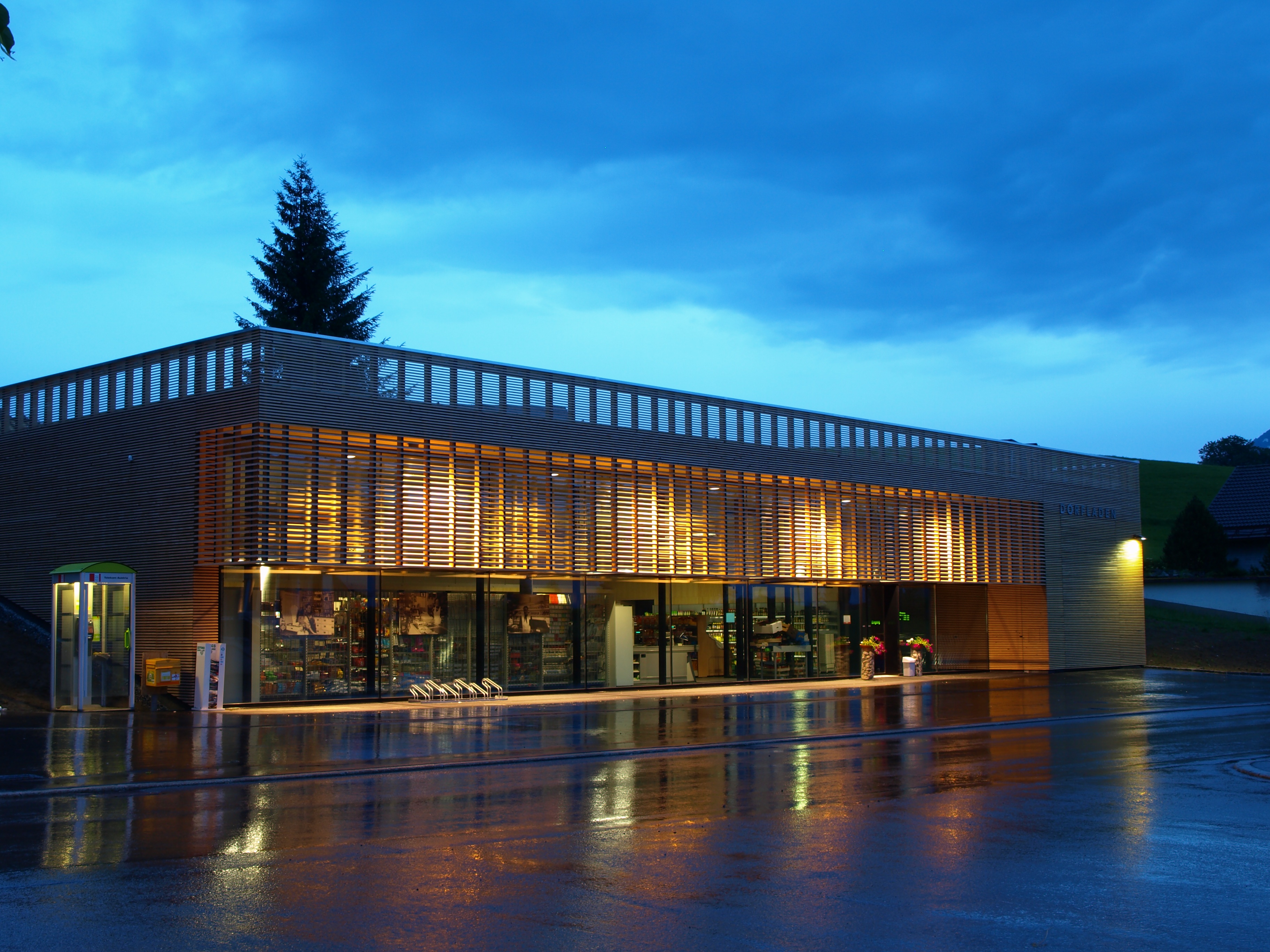
Langenegg, Vorarlberg, Austria
The municipality in the district of Bregenzwald has 1,062 inhabitants and is located at an altitude of between 465 m and 994 m. It presents itself as a village stretched out along a road and has historically been divided into two centres: one with the church, the other, at a 1.5 km distance, with administrative buildings, schools and shops. These are surrounded by a number of individual houses on the wide alpine plateau, dating back to the early tradition of real division.
Despite good traffic connections, the location is at some distance from the centres of Dornbirn and Bregenz, which resulted in a massive downturn of the municipality in the 1970s, 80s and 90s. Fifteen years ago, only one was left of the formerly seven guest houses, the last supermarket was about to close and the number of workplaces in agriculture and the trades, too, was rapidly declining. Langenegg almost became a typical commuter municipality – including all the negative side effects.
Change came with participation in the project “life worth living”, a project of the state government Vorarlberg in the mid 1990s. In cooperation with the population, the municipality, together with the University of Innsbruck and the University of Applied Sciences Liechtenstein worked out a comprehensive development concept. The pilot project was the joint decision to renovate a then empty, historical building in the heart of the village, which had been traded as a candidate for demolition for quite some time. At the same time, the newly founded economic union managed to establish important services in the now perfectly refurbished building (also in view of energy efficiency): a doctor, a pharmacy, a clothing store and a hair-dresser plus three residential units. This was an important first step towards more quality of life and a higher degree of identification with the locality.
The building also includes one of the first chipped woods plants of the region, heating the entire centre of the municipality. It replaces some 85,000 l of heating oil per year and shows how serious Langenegg’s population is about “Consciously living energy” – as early as in the mid 1990s.
In the next step, local supply with foodstuff was secured and extended, and social contacts were encouraged. The municipality built a new supermarket on a central plot, which, due to its location, the service-orientated environment and the atmospheric characteristics, became a place of communicative encounters and ensured a shopping experience of the highest quality. Not only in view of the product range – including many regional products and a complete supermarket range – but also in view of the construction style, this shop sets a new benchmark. Local handymen constructed the first supermarket in Vorarlberg with a passive house skin, built entirely from the local white fir.
The use of regional and local materials – especially unprocessed white fir, which can easily be recycled if necessary – is an important contribution in view of ecological building, used by many private and communal building projects. Not at least it also contributes massively to strengthen the local economic cycle and therefore corresponds to the philosophy of Langenegg, namely that every measure should have the highest possible use for as many citizens as possible. In this case, above all, local agriculture and forestry, the timber industry and timber-processing businesses, benefit.
In the same sense, architecture in Langenegg never is the objective in itself, but always includes a social and economic component. The municipality offers the services of a free construction consultant and also ensures that, in order to protect the cultural landscape on the outskirts, no further surfaces are zoned as plots. To present day, the municipality can look back on an impressive list of awards in connection with its endeavor for sustainability.
As a member of the Climate Agreement Austria and being an e5-municipality, climate protection, energy saving and the use of regenerative energy sources are important elements of the activities of municipality and citizens alike and constitute the red tread through many varied projects. Bio gas, chipped woods and a number of photovoltaic and solar plants are subsidized by the municipality and make Langenegg a role model in terms of energy self-sufficiency.
From the beginning, awareness among the citizens was an important part of all measures, and the energy needs of all people – including those with special needs – have been considered. An especially good example thereof is the integration of the “Langenegg Lebenshilfe Werkstätte” in economic life, which has taken over postal services in the “Postlädle” and now also offers products made in the workshop for sale. The high degree of commitment on part of the citizens, manifested in a number of different activities, ideas and the execution of linked projects (the Vorderwälder Car Pool Exchange, Langenegg Talents, a communal energy consultant, energy portals, a car pool car owned by the municipality, annual tickets for rent for the public transportation within the limits of the Vorarlberg, the Käsestrasse Bregenzwald, a comprehensive social concept for youngsters and seniors and people in need, just to name a few) in different areas is like a substitute currency helping to keep money in the municipality.
They all prove that the citizens of Langenegg take responsibility for a sustainable development of their own village and that they live the motto of the competition “New energy for a strong community” literally and in a broader sense.
Evaluated: 2010

